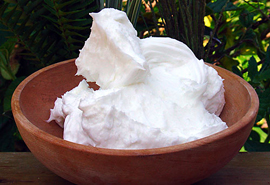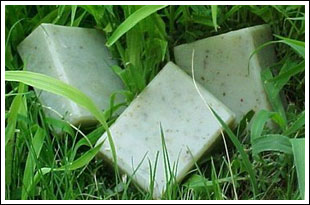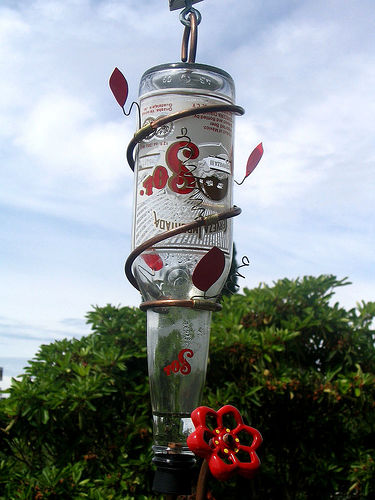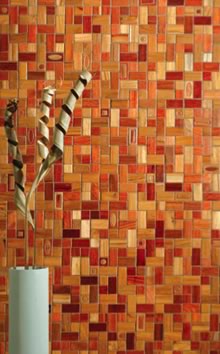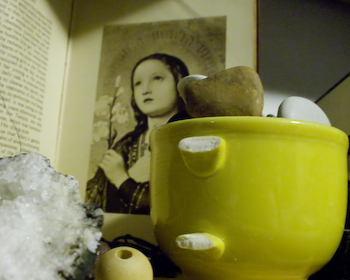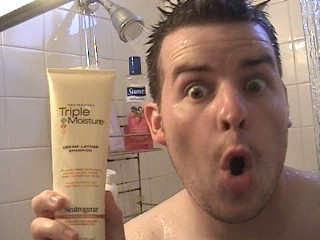Want a DIY project that’s super satisfying?
How about one that looks like it was a LOT more work than it actually is?
How about one that’s totally customizable, letting you pick the perfect ingredients for you to obtain the exact results that you want?
And let’s say that you also want all the ingredients to be 100% natural.
Oh, but you also want to be able to source your ingredients from the grocery store and the local hardware store.
And you need your project to be useful. But also beautiful! And creative. But also not time-consuming!
Homemade soap. The project that you’re looking for is homemade soap.
The “Why” of Homemade Soap
Homemade soap is easy, fun, and satisfying to make, and you can craft your soap to your exact specifications.
That last “why” is the path that a lot of people take to find their way into homemade soapmaking. For some, it’s the eco-friendliness of homemade soap that’s the appeal. Homemade soap isn’t pre-packaged, hasn’t been made in a factory, and hasn’t been transported via truck across the nation’s highway grid. It also doesn’t contain any sulfas or phosphates, no artificial dyes or scents, no non-natural preservatives, and no plastic micro-beads or other aggressively contaminative additives.
Homemade soap is also a great go-to for those with sensitive skin, or any kind of particular skin need. Unlike most commercial soaps, homemade soap isn’t a detergent, so most people find that it’s much less drying than commercial soaps. Any other particular quality that one would long for in their soap is also possible to achieve in homemade soap. You can make a soap that’s astringent or a soap that’s moisturizing, a soap that’s gentle enough for a baby or scrubby enough for the filthiest hands. Did you even know that you wanted an invigorating soap for morning AND a calming soap for evening? Flip through any natural soapmaking book and you’ll find that nearly every recipe is geared for a different, delightful result.
Not for nothing, especially considering all the fancy, custom results you can obtain, but homemade soap is also hella thrifty. My husband is obsessed with buying THE CHEAPEST SOAP that our big-box grocery store stocks (*cough, cough, it’s Ivory, cough*), and I can still beat him out with the per-bar price of my soap made from bulk olive oil from Sam’s Club, hardware store lye, and everything else from my kitchen and bathroom. My current favorite soap has a ton of literal ground cinnamon mixed into it, and I’m pretty excited about how it makes me smell like a cookie.
The “How” of Homemade Soap

The big secret is that making homemade soap is… weirdly easy? There are only, like, two big rules:
- Use an established recipe, and run it through a soap calculator anyway. Same goes for those nommy essential oils that you want to add–run them through an essential oil calculator first. Soapmaking is chemistry, and crappy, imprecise soapmaking is the kind of chemistry in which your soap either never, ever hardens, or it hardens just fine… and then burns your skin off in the shower. Just double-check the math with a good online calculator, and you’re all set!
- Lye isn’t the scariest thing in the world, but it’s also not a toy, either. I’ve done a couple of wacky things with lye (turns out you shouldn’t stick your head right over the bowl that you just mixed the lye and distilled water into), but nothing too bad has ever happened. Heck, I even regularly make soap with my kids, and nothing bad has ever happened to them, either–and they’re agents of chaos! But we’re super respectful of the lye, too. We measure and pour carefully (lye into water, not water into lye!), wear long sleeves and rubber gloves and goggles, and keep the jug of white vinegar handy.
Because soapmaking can feel kind of intense when you’re in the middle of making your first batch, it’s helpful to first watch a few different videos walking through the process. Trace, for example, is one of those things that you have to actually see to understand, but once you’ve seen it for yourself, as in the video below, you’ll always know what to look for!
In the above video, though, note that the soapmaker does use palm oil. Palm oil is called for in a weirdly large amount of soap recipes, but fortunately there are also billions of other recipes that don’t call for palm oil. Once you know what you’re doing, you can substitute a different oil for palm in a recipe that you want to try (don’t forget to use that soap calculator!). I am WAY too lazy to substitute and recalculate recipes, though, so to be honest I just look for recipes that don’t include palm oil.
To find actual soap recipes, I really like to flip through library books. My all-time favorite book is The Best Natural Homemade Soaps, by Mar Gomez. I do like to play around with essential oils and other add-ins, but I do NOT like to play around with a lot of different oils, mostly because I’m stingy and I don’t want to have to buy them. These soaps, however, are primarily olive oil-based, which suits me and my giant metal jug of olive oil just fine!
Here are some of my other favorites:
- Handmade Soap Book, by Melinda Coss. This book has good intro recipes for all kinds of little soapmaking niches. Along with standard soaps, it has beginner’s recipes for honey soaps, castile soaps, dairy soaps, and glycerine soaps, as well as some soap-adjacent haircare recipes.
- Simple and Natural Soapmaking, by Jan Berry. If you think you might get super into herbal infusions and essential oil combos, this is the book to check out. It’s got herbal infusions, veggie blends, and all kinds of interesting natural add-ins.
- Pure Soapmaking, by Anne-Marie Faiola. If you’re interested in fancy soaps with beautiful color combos and fun effects, this is a great book to try. The recipes are good, but the real hook is all the different techniques you’ll learn for layering colors, mixing, and combining colors and add-ins to create unique looks.
- The Natural Soap Chef, by Heidi Corley Barlo. Because this book specializes in small-batch recipes, it’s a great one when you want to play around with fun new techniques or oil combinations.
If you love soapmaking, too, and you’ve got your own favorite recipe or book, let me know about it in the Comments below!



